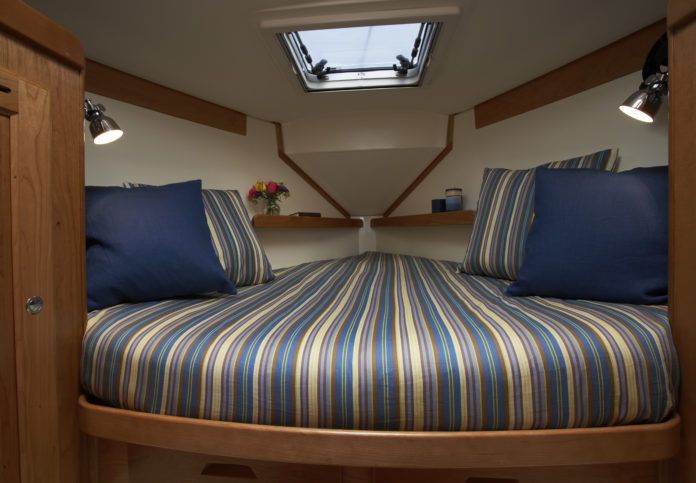If you have a damp interior—as frequently happens in tropical locations or during long runs of humid weather—the bottoms of your boat mattresses may get moist. That’s when mold, mildew and bacteria take hold. Although liveaboards seem to build an unnatural resistance to some pretty pungent environments, I’ve found over the years that even some of my most enthusiastic and eager crewmembers soon become miserable with allergies if the boat is plagued by mildew.
We’ve done plenty of articles on fighting mildew with sprays and dehumidifiers, but it’s better to prevent mildew altogether. Here are three products that can help keep that mystery moisture from appearing under your bunk cushion or mattress. Combine any of these products with a routine treatment of our penny priced homemade mildew preventative “Formula B” and you should not have to worry about bunk mildew smells again.
HyperVent is a 3/4-inch mat of stiff coiled plastic, 39 inches wide, bonded on one side to a breathable fabric. The spun polymer can be cut with scissors, but a template is always a good idea. It permits air circulation under a mattress. It weighs but 4.3 ounces per square yard, can be washed, and will outlast any mattress. It’s not cheap, but it could save your cushion. There’s a similar product aiming at the “van-life” vagabonds called Den-Dry, which we have not tested.
Another option is Dri-Dek, 9/16-inch-thick, foot-square, polyvinyl chloride interlocking tiles coated with something called Oxy- B1 to further inhibit mold, mildew, and bacteria. This product isn’t just for use under mattresses; it is a popular locker liner as well. It can be fitted with a knife, comes in 12 colors, and is sold by the tile.
A couple of other products that we have reviewed behaved like diapers, expanding as they absorbed moisture. One was Dry Bunk, the other was Ventair, but we could not find a source for either of these fabrics – which were sold by the sheet.
For more on choosing boat mattresses, our archive report compares types and materials, and although some new products have entered the market, the overall findings are still valid today. Also, for comprehensive look at keeping mildew and odors at bay throughout the boat, see our two-volume eBook “The Mildew Free Boat.”





































Vinegar works well. Spray on bread, cheese, under cushions. Prevents meat from getting slimy.
Hi Mark,
Vent air is actually the predecessor to hypervent.
Ventair had two scrims – front and back – whereas hypervent has only one.
it works a treat. The advantage to the Vent air double scrim is that it won’t tear up the wood on which it normally would sit nor of course the mattress covers.
My apologies for dictation. The broker who sold us and then we walked from after a bad survey on our first Morgann 46 previously was the US rep for it.
we were disappointed to find that hypervent did not have two scrims, but it is exactly the same product and when we needed more that’s what we used. We got ours from Defender as the least expensive source we found…
Oops.
My apologies. Wrong writer. Being on my phone is a distinct handicap. So I meant, of course, Darrell…
Here in Mexico, we use “carbon” , it is charcoal in a basic form not pressed into briquets. An inch or two in a shallow pan in each compartment keeps 99% of mildew from forming, even in the humidity we have here. When traveling back north and leaving for 5-6 months this works for our 48′ sailboat, our vehicle, and the closets in our casa. Have not tried briquets, they may work also. “Carbon” lasts 3-4 years, does not collect moisture.
We have a foam mattress, and in warm weather we don’t have a problem with dampness, however in cooler weather I get condensation on the bottom of the mattress. My solution is to check for moisture in the morning, and if it feels damp I slide an oar under the mattress and prop it up so that it drys during the day.